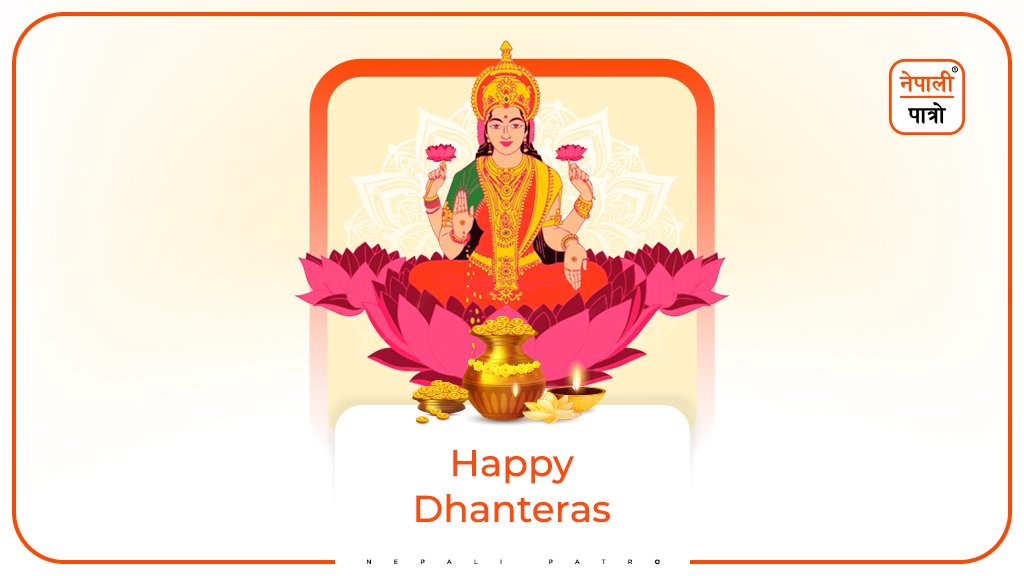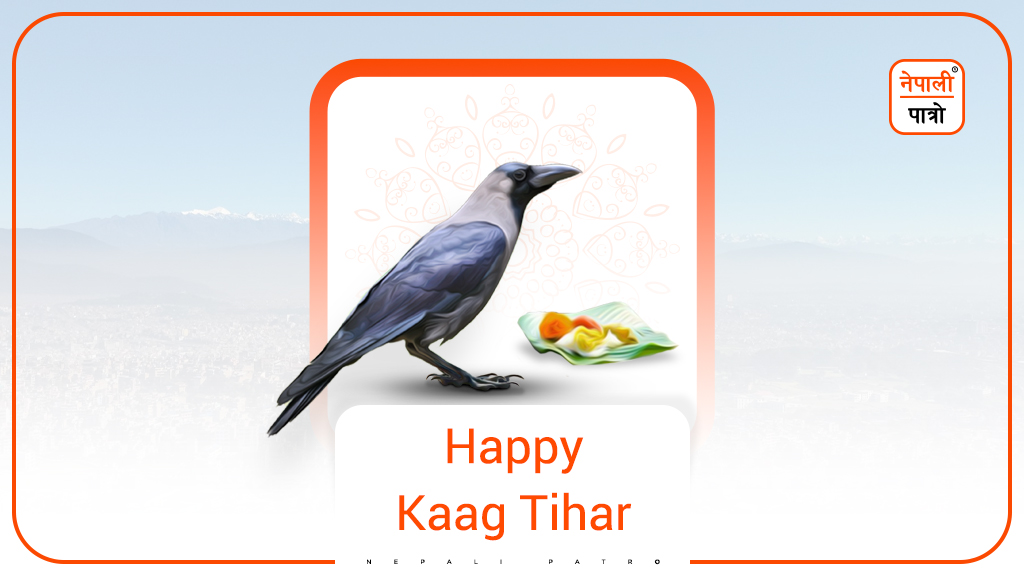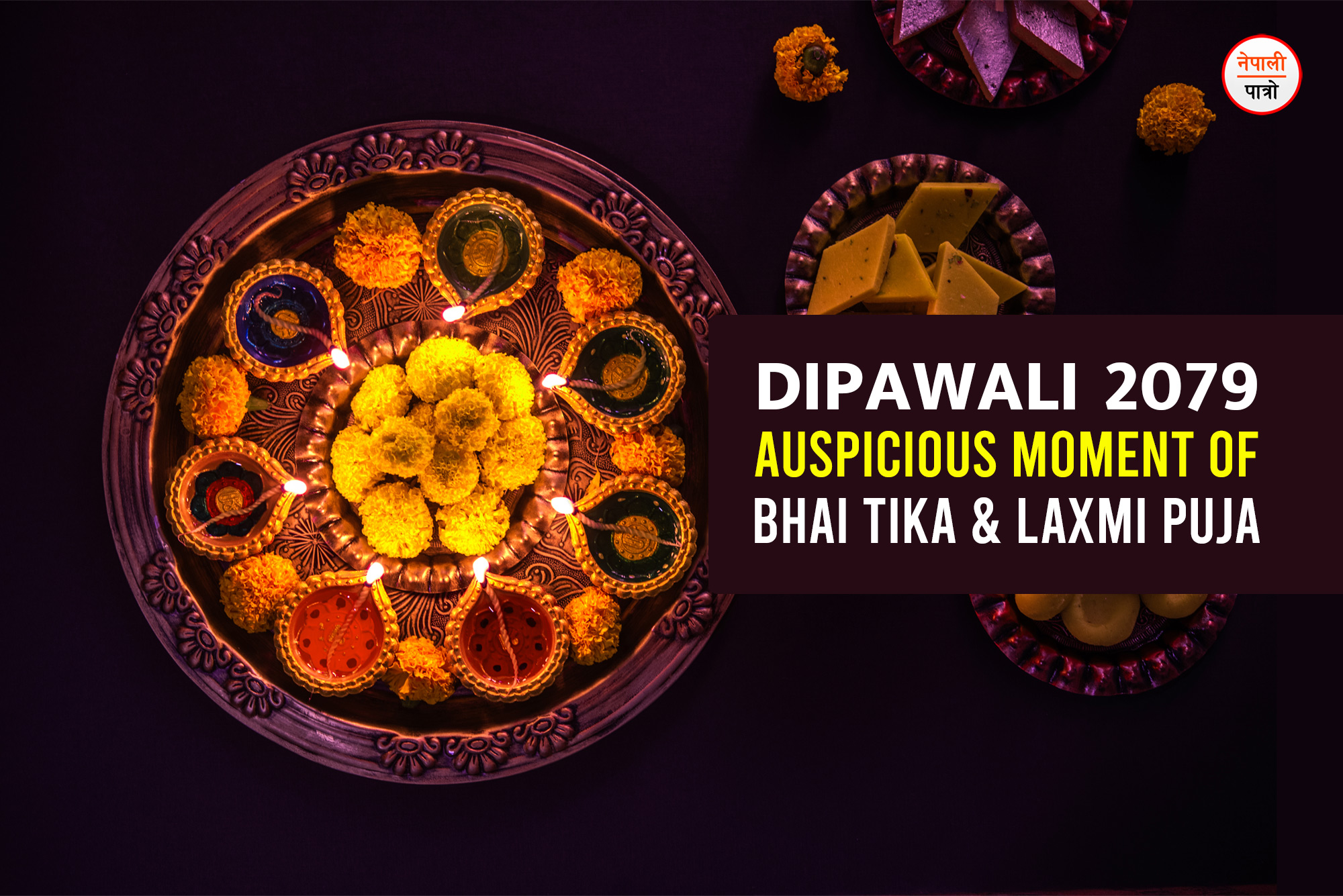
Dhanteras
By
Sudan Bhattarai
December 10, 2021
Dhanteras falls on the day of Kartik Krishna Paksha Dwadashi. The first day of Tihar (Yamapanchak), which starts from Kaag Tihar (Kartik Krishna Paksha Trayodashi) followed by Kukur Tihar (Kartik Krishna Paksha Chaturdashi). After the beginning of Yamapanchak, on the day of Kartik Krishna Paksha Ausi, for the attainment of materials wealth and prosperity, etc worship of goddess Laxmi is performed known as Laxmi Puja. Another important festival on the day before Lakshmi Puja is also known as Narak Chaturdashi. Dhanteras is duly celebrated with a lot of zeal among the people in general before two consecutive days .
Not only in Nepal but also abroad, it is customary for many people to collect some coins or money in small bags or piggy bank every day of the year. But in Nepal saving money like this has more importance and significance than abroad. Saving every penny like this during childhood, our parents are trying to teach us the value of money. And, while accumulating money, coins, etc. in a piggy bank (Khutruke), our parents unknowing are developing and cultivating the habit of saving into us. Saving money in this way, throughout the year, on the day of the festival, that act surely conveys a sense of happiness in the family and this act also works to inspire every Nepalese to engage in our own religion and good deeds, etc as well as saving money for the future use.
With the collected money, on the day of Dhantaresh, the family goes to the market and buys idol/idols of Mother Laxmi, Kuber, and Ganesh according to their financial capability. In this way, after invoking the life (prana pratistha) onto the idols bought on the day of Dhanteras, the Puja is performed and celebrated by placing the idols of Goddess Laxmi, Kuber, and Ganesh in a row during the day of Lakshmi Puja,
Among the various days of Yamapanchak i.e. Tihar, the special celebration of Laxmi Puja is a very important day after Bhai Tika/Kija Puja. While worshiping the figures in this way as mentioned, our infinite and unbreakable relationship with these gods becomes more special and strong.
On the other hand, in foreign countries, when children save money in their piggy bank, etc they can or buy mobile phones, sports items, etc. with the money they have accumulated. But Nepal’s culture, way of life, religion, etc. motivates us to help the poor, or to save our own religion and culture, environment, to plant trees instead of spending money on such luxuries. But while saying all these things, it is important to remember that on the occasion of Dhantaresh, the idols bought with the money saved during a year should be worshipped duly according to the rules/rituals.
“Wealth” means “monetary wealth” or “property” etc. whereas “Teras” means the 13th day of the Kartik Krishna Paksha Trayodashi of Vikram/Bikram Samvat Hindu calendar. In this sense, the act of purchasing material wealth as idols on the 13th day of Kartik Krishna Paksha Trayodashi, for the purpose of Laxmi Puja is called Dhanteras. The day of the Dhanteras festival can be considered as a special day set aside for the shopping propose of Laxmi Puja. The main purpose behind buying goods, idols of gods, or utensils made of gold and silver on the day of Dhantras may be due to the fact that in the coming years the goods bought for a small amount can hike up. It may be possible to sell it at a higher price or for more than the amount purchased in the recent past.
Another major reason for collecting money like this is with a strong belief as such that the money collected throughout the year must be used today to buy something for Goddess Lakshmi Mata. It is a rule to buy an idol of Goddess Lakshmi or Lord Ganesh made of gold or silver according to one’s financial capability, or to buy utensils or such if one is unable to buy an idol made of gold and silver, etc.
Businessmen/shopkeepers also celebrate the Dhanteras festival on this same day. Since Dhanteras falls on the day of Triayodashi, this day or date is also known as Dhantrayodashi. The practice of adding/buying wealth, utensils or idols, etc. on Dhanteras for Lakshmi Puja is in vogue since some time ago and is still prevalent today.
In Hindu Sanatan Dharma, knowledge is divided into two types. They are known as Para and Apara Vidya (vidya meaning knowledge). Acquiring these two types of knowledge is also Laxmi Puja. Para Vidya is a combination of two words. In Hindu philosophy, the word para means existence, supreme object, highest point, ultimate beauty, etc., while Vidya means knowledge, philosophy, and science, and education and the Inherent wisdom (knowledge (inherent erudition) in man. Therefore, para vidya means “higher education or learning related to the soul or the ultimate truth, that is, divine knowledge.” For this reason, Para Vidya is also known as supreme knowledge.
Apara Vidya is also called ‘direct knowledge’ or ‘Brahma-Vidya’ in Sanskrit. In Hinduism, the knowledge acquired by listening is the opposite of para-vidya, but the direct knowledge gained through experience is known as apara vidya/knowledge. Narak Chaturdashi i.e. Kartik i.e. Dhantaresh is also a famous day when the Tihar festivals begin.
There is also a mythical story about Dhanteras. Once upon a time, a King named Hima used to rule a kingdom. King Hima’s daughter-in-law, used to take good care of Hima’s grandson in other words her husband’s (prince’s) son. While taking care of the child, one day she saved King Hima’s grandson, the future heir of the kingdom, from the mouth of Yamaraj, king of death.
As the story goes, once, Yamaraj disguised as a snake broke into Hima’s grandson’s bedroom. Knowing that Yamaraj had entered the bedroom in the guise of a snake, she was thinking about how to save the future heir. Hima’s daughter-in-law hurriedly placed countless gold ornaments and silver coins on the door of the room as the child’s life was in danger. In the same way, the two corners of the door of the room and the whole room were also was lit with oil lamps. The reason she did this was to prevent the snake from entering the room. Hima’s daughter-in-law did this in order to save the heir of King Hima’s clan. The serpent’s eyes were affected by the brightness emitted from the gold, silver, and oil lamps because of which it went blind. Because of the brightness emitted from the gold and silver ornaments plus scattered silver coins and the light of the lamps that filled the room the serpent lost its vision or his eyes.
After this incident which is related to Dhanteras, which can be traced back to an ancient belief that it would be auspicious for the home and family to buy gold or silver ornaments, as well as precious metal utensils, etc on this day. There is a strong belief prevalent in the society that Jewelry and utensils, etc. bought in this way works as a symbol of protection, and it protects the family members from evil spirits, and so on. According to the mythology and folk culture like these, as well as the customs and traditions that have been going on for centuries, there is a very old custom of worshiping the idols of gods, after performing its bathing ceremony to put on its dresses, ornaments, etc., on this day.
As mentioned above, buying goods, including jewelry, is also considered an auspicious deed on this day. It is a special duty of every Nepalese (as per their social capacity) to welcome and invite the festival to the house by buying idols of God, ornaments, utensils, etc., according to their financial capability, and to make the festival brighter and merrier, so as to create happy moments in the family. Isn’t it so?
In Nepal, especially in urban areas, gold and silver trades are very crowded on the day before the day of Laxmi Puja, i.e. Dhanteras. This crowd is of the consumers to buy gold and silver or the merchants who sell them. Apart from auspicious occasions like weddings and bratabandha, when the price of gold and silver are skyrocketing in the city market and likewise during the festivals of Dashain and Tihar or when they are approaching the price starts skyrocketing again as always during the season when people buy them.
However, since gold and silver idols bought on the day of Dhanteras have been invoked with the life (prana partisan) of the god/goddess, it is strictly forbidden to sell them. Considering the general situation of Dhantaresh, there is a saying that goes like this: “If you buy money on the day of Dhanteras, you will get more money from that money”. In practice, generally after some time, the resale value of gold, or of precious metals in general, gets higher than that of the purchase price or date.
This is why Dhanteras has been in vogue for centuries as an important day for buying gold, silver, and other precious metals. The main purpose of buying gold or silver idols, utensils of precious metals, etc on the day of Dhanteras, is considered as a special way to welcome Mother Laxmi into one’s home.
On the occasion of this important festival, Dhanteras and Dhanbantari Jayanti Nepali Patro Wish all Sanatan Hindus and their believers many many happy greetings.
Related Posts
Kaag Tihar
April 21, 2020
Auspicious Moment of Bhai Tika 2079 B.S
October 20, 2022


November 10, 2023 2 years
Wishing u HAPPY DHANTERAS to every family in the world from my family